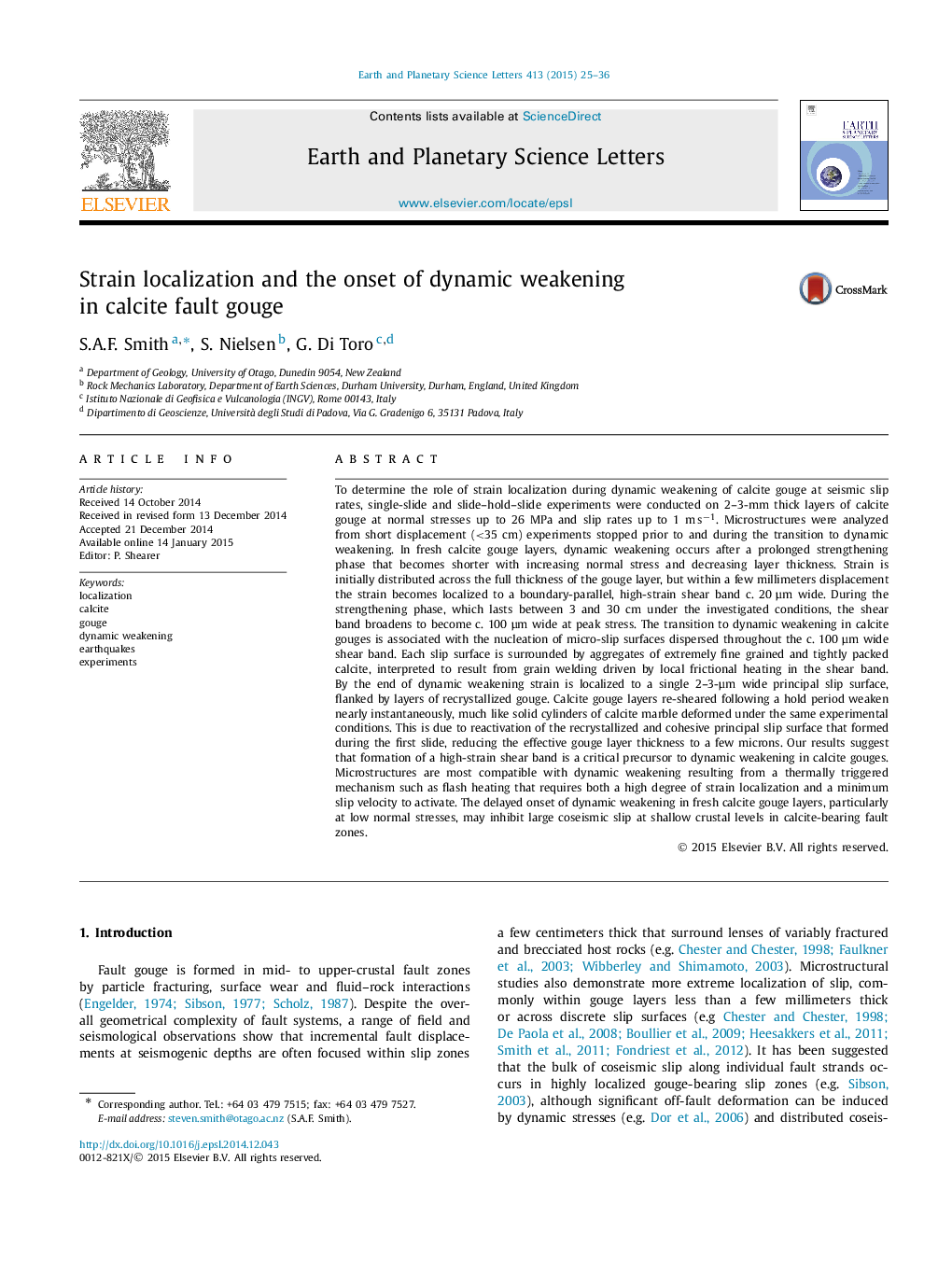| کد مقاله | کد نشریه | سال انتشار | مقاله انگلیسی | نسخه تمام متن |
|---|---|---|---|---|
| 6428589 | 1634743 | 2015 | 12 صفحه PDF | دانلود رایگان |
- Experiments on calcite gouges to investigate strain localization and dynamic weakening.
- Formation of high-strain shear band is critical precursor to dynamic weakening.
- Observations compatible with gouge dynamic weakening by flash heating in shear band.
- Re-sheared calcite gouge layers weaken rapidly like solid marble.
- Transition to dynamic weakening easier at higher normal stress.
To determine the role of strain localization during dynamic weakening of calcite gouge at seismic slip rates, single-slide and slide-hold-slide experiments were conducted on 2-3-mm thick layers of calcite gouge at normal stresses up to 26 MPa and slip rates up to 1 mâsâ1. Microstructures were analyzed from short displacement (<35 cm) experiments stopped prior to and during the transition to dynamic weakening. In fresh calcite gouge layers, dynamic weakening occurs after a prolonged strengthening phase that becomes shorter with increasing normal stress and decreasing layer thickness. Strain is initially distributed across the full thickness of the gouge layer, but within a few millimeters displacement the strain becomes localized to a boundary-parallel, high-strain shear band c. 20 μm wide. During the strengthening phase, which lasts between 3 and 30 cm under the investigated conditions, the shear band broadens to become c. 100 μm wide at peak stress. The transition to dynamic weakening in calcite gouges is associated with the nucleation of micro-slip surfaces dispersed throughout the c. 100 μm wide shear band. Each slip surface is surrounded by aggregates of extremely fine grained and tightly packed calcite, interpreted to result from grain welding driven by local frictional heating in the shear band. By the end of dynamic weakening strain is localized to a single 2-3-μm wide principal slip surface, flanked by layers of recrystallized gouge. Calcite gouge layers re-sheared following a hold period weaken nearly instantaneously, much like solid cylinders of calcite marble deformed under the same experimental conditions. This is due to reactivation of the recrystallized and cohesive principal slip surface that formed during the first slide, reducing the effective gouge layer thickness to a few microns. Our results suggest that formation of a high-strain shear band is a critical precursor to dynamic weakening in calcite gouges. Microstructures are most compatible with dynamic weakening resulting from a thermally triggered mechanism such as flash heating that requires both a high degree of strain localization and a minimum slip velocity to activate. The delayed onset of dynamic weakening in fresh calcite gouge layers, particularly at low normal stresses, may inhibit large coseismic slip at shallow crustal levels in calcite-bearing fault zones.
Journal: Earth and Planetary Science Letters - Volume 413, 1 March 2015, Pages 25-36
